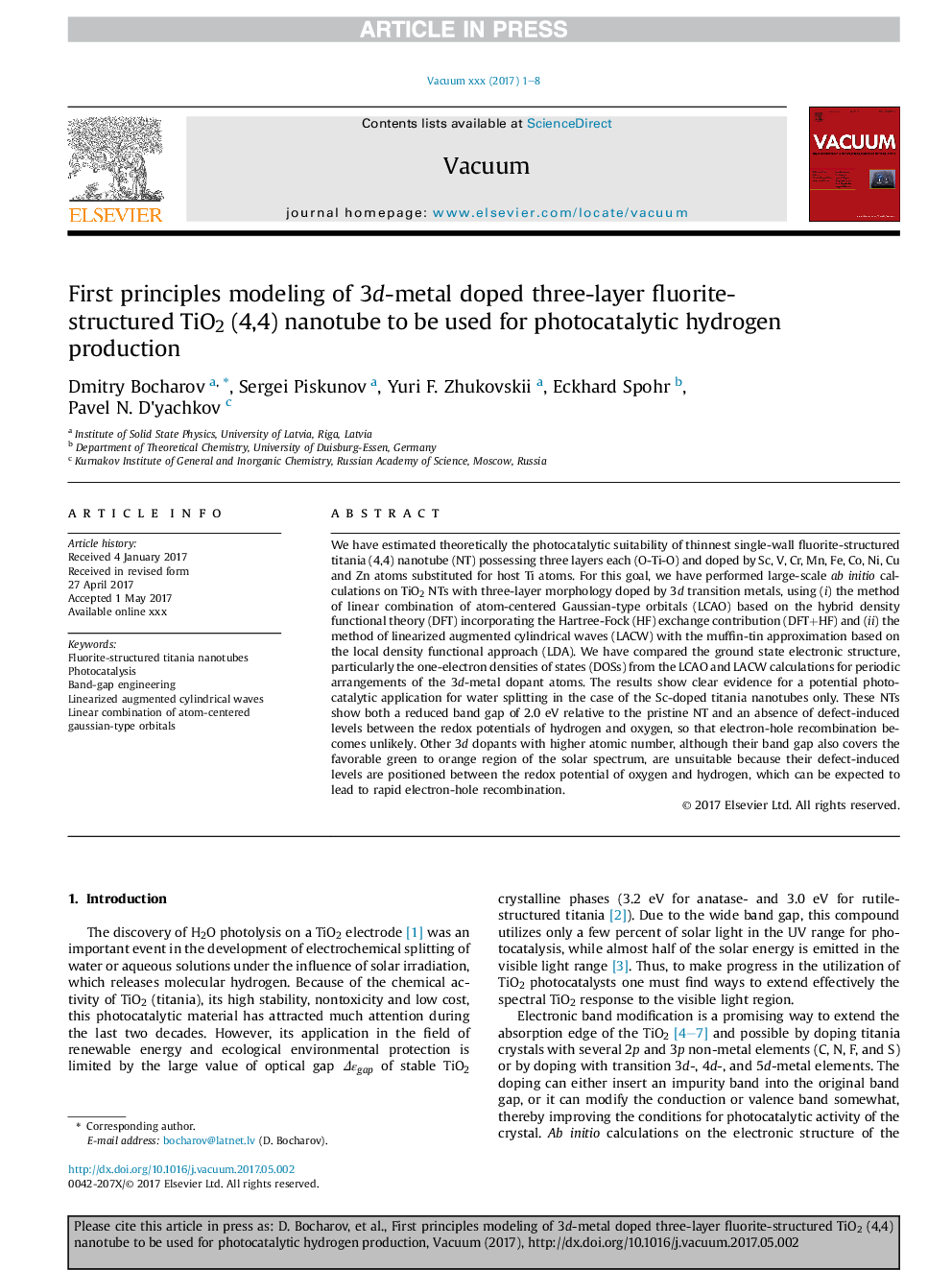| Article ID | Journal | Published Year | Pages | File Type |
|---|---|---|---|---|
| 8044799 | Vacuum | 2017 | 8 Pages |
Abstract
We have estimated theoretically the photocatalytic suitability of thinnest single-wall fluorite-structured titania (4,4) nanotube (NT) possessing three layers each (O-Ti-O) and doped by Sc, V, Cr, Mn, Fe, Co, Ni, Cu and Zn atoms substituted for host Ti atoms. For this goal, we have performed large-scale ab initio calculations on TiO2 NTs with three-layer morphology doped by 3d transition metals, using (i) the method of linear combination of atom-centered Gaussian-type orbitals (LCAO) based on the hybrid density functional theory (DFT) incorporating the Hartree-Fock (HF) exchange contribution (DFT+HF) and (ii) the method of linearized augmented cylindrical waves (LACW) with the muffin-tin approximation based on the local density functional approach (LDA). We have compared the ground state electronic structure, particularly the one-electron densities of states (DOSs) from the LCAO and LACW calculations for periodic arrangements of the 3d-metal dopant atoms. The results show clear evidence for a potential photocatalytic application for water splitting in the case of the Sc-doped titania nanotubes only. These NTs show both a reduced band gap of 2.0Â eV relative to the pristine NT and an absence of defect-induced levels between the redox potentials of hydrogen and oxygen, so that electron-hole recombination becomes unlikely. Other 3d dopants with higher atomic number, although their band gap also covers the favorable green to orange region of the solar spectrum, are unsuitable because their defect-induced levels are positioned between the redox potential of oxygen and hydrogen, which can be expected to lead to rapid electron-hole recombination.
Keywords
Related Topics
Physical Sciences and Engineering
Materials Science
Surfaces, Coatings and Films
Authors
Dmitry Bocharov, Sergei Piskunov, Yuri F. Zhukovskii, Eckhard Spohr, Pavel N. D'yachkov,
